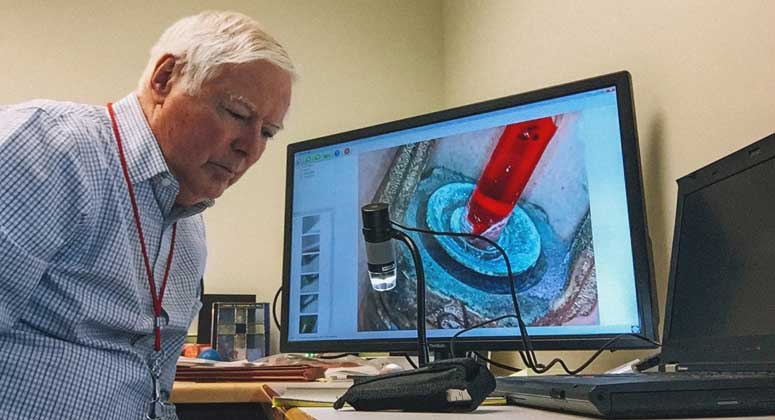
Since his graduation from Illinois Tech, Thomas Gayle Pennel (FPE ’67) has devoted his professional life to designing and evaluating fire protection systems. For nearly five decades he has designed fire protection plans for structures such as Kingdom Tower in Saudi Arabia, Chicago’s Willis Tower, and the Miami International Airport.
Pennel says that while fire protection engineers know in most cases what causes the ignition of fires, predicting when fires are going to occur is one of the most difficult aspects of the job. Additionally, engineers can predict how a fire will grow in a single room but still cannot forecast how a fire will spread throughout a building. In order to test a fire protection system, engineers set up a configuration, install a sprinkler design, and test the system with a real fire. This testing module can be expensive, with large-scale fire testing ranging from $50,000 to $100,000.
“You have to be very careful in designing these configurations to make sure you get the answers you want and need,” says Pennel, adding that high-rises present a special challenge. “The fire department cannot use its normal equipment, so systems have to be built into the building itself.”
A lot besides how to tackle fires in tall buildings has changed in the field of fire protection since Pennel attended Illinois Tech. Although his major was discontinued in the early 1980s, the fire protection engineering program, which was established at Armour Institute in 1903, served as a model for others that followed across the country. According to archival documentation, the first woman in the United States to receive a degree in fire protection engineering graduated from Illinois Tech.
“Fire protection engineering has gone from being somewhat of an art to being more of a science,” he says. “Fire is a very dynamic entity, so it’s hard to know exactly what’s going to happen.” Pennel went from using a TI SR-10 calculator, his workhorse tool that had the ability to do square roots, to relying on state-of-the-art computer programs to help formulate the design of sprinkler systems. “You’re getting more for your money,” he explains. “In the past, you overdesigned because you didn’t know what safety features you were working with.”
Pennel continues to work full time at Aon Fire Protection Engineering as a consultant designing systems, assessing failures, and surveying and inspecting installations.
In 2014 he received the National Fire Protection Association (NFPA) Special Achievement Award for “significant contributions to the development of NFPA codes and standards.” Additionally the 2016 edition of the handbook NFPA 20: Standard for the Installation of Stationary Pumps for Fire Protection is dedicated to him in recognition of his contributions to the field as chair of the NFPA 20 Technical Committee.
“Gayle has been heavily involved in writing a substantial amount of the handbook,” says Chad Duffy, NFPA senior fire protection specialist and handbook editor. “He’s been in the industry for 47 years, so he’s able to provide a great amount of guidance for several different scenarios you may run into in the industry.”